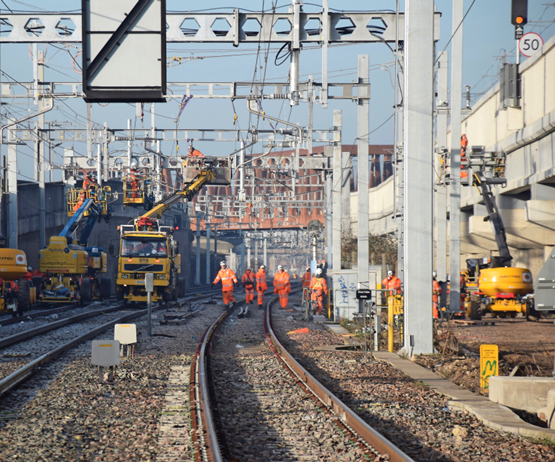 Read the peer reviews for this feature
Read the peer reviews for this feature
The Hansford Review has landed on the desks of Network Rail’s top brass - more than seven months after Professor Peter Hansford, former chief construction adviser to the UK Government, was asked to lead a team examining how much competition there was in the rail industry. In particular, the panel was asked to establish how straightforward it was for third parties to invest in and deliver infrastructure.
Given it was commissioned by Network Rail’s board, publicly announced by Chief Executive Mark Carne and the consultation championed by Chairman Sir Peter Hendy, one might speculate that the author was already leaning on an open door. However, his name joins a list of those who have subjected the industry to forensic analysis in recent years and many of its 60 pages will have made for tough reading.
The McNulty Report of 2011 considered the costs and efficiency of Britain’s railways. Four years later Dame Colette Bowe, the former telecoms and financial services regulator, made recommendations on governance and the roles of the Department for Transport and Network Rail in planning and delivery as budgets and timescales for projects in Control Period 5 began to overrun.
On his appointment to Network Rail, Hendy had his own review to see what could be delivered affordably. Then HS1 Chief Executive Nicola Shaw examined the future shape and financing of Network Rail in March 2016. The year closed with the National Audit Office saying planning failures at DfT and weaknesses in Network Rail’s management of the infrastructure programme led to more than a billion pounds being added to the cost of electrifying the Great Western Main Line.
Hansford acknowledges those who have gone before him in the introduction of his review, aiming to build on them. Formally titled Unlocking rail investment - building confidence, reducing costs, his aim is evolution not revolution, aligning his recommendations with transformation work already underway as a result of studies gone before. The stall is set out early on in the document. “The underlying tenet of the review is that a more contestable market for rail projects would create pressure on Network Rail and its suppliers to be more innovative, to improve cost performance, deliver projects more competitively and predictably and therefore offer better value for money,” he states. “In addition, it would provide more opportunities for third parties to fund and deliver projects.”
“Visible progress has been made,” says Hansford, but he adds: “There is much more to be done to truly unlock the market. I believe that the potential ‘size of the prize’ is significant and that this prize is within reach.”
There were eight members of the review team, their expertise drawn from not only the rail sector but engineering, transport strategy and finance. A key assumption is ‘The overwhelming majority of new rail infrastructure on the national rail network is delivered and financed by Network Rail.’ More than 150 organisations were consulted, including people who supply the rail industry, financiers, legal professionals and government organisations.
It considered case studies of projects both completed, like the Borders Railway (where a private finance initiative deal was abandoned, although this threat of competition appears to have forced Network Rail to reduce its price for delivering the project) and those in an early stage such as preparing Leeds station for the arrival of High Speed 2 (where HS2 and Leeds City Council have signed a collaboration agreement).
Among the respondents to the call for evidence was the Urban Transport Group. This combines the largest transport authorities for the biggest conurbations, covering well over 20 million people. That’s Transport for London and the equivalents for the other big city regions, Transport for Greater Manchester, Nexus (The Tyne and Wear Passenger Transport Executive), South Yorkshire PTE and Merseytravel. Its director Jonathan Bray explains: “We are the professional network for these authorities, bringing them together to learn from each other; we also represent them around common issues on transport schemes, which often boils down to funding and governance.”
When asked by the Hansford Review how well the current system of infrastructure delivery works, on a scale of one to ten where one was “very poorly” and ten was “exceptionally well” the responses from members ranged between two and six.
“The unit costs of infrastructure projects on the national rail network appear to be higher than those in comparable industries. Our members have, as a rule, experienced significant cost escalation across a wide range of local projects. Much of the asset information held by Network Rail has proven unreliable and this helps explain some of the delays and cost escalation experienced,” says the UTG, adding: “Network Rail processes are overly complex, inflexible, opaque and time-consuming. Rail standards are, in general, overly prescriptive, expensive to meet and Network Rail is too rigid in their application.”
Bray is clear why the Hansford Review was needed. “I think the confidence in Network Rail and the railways more generally to deliver projects in a cost-effective and timely way - or in the way they are promised to be delivered, is low,” he says. “I think that’s for a number of reasons, the main one being practical experience of schemes that are priced high to start with and then get higher over time.”
So far this is in line with the thoughts members of UTG offered in evidence. Bray goes further though, into the culture of the rail industry. “The railways are quite insular. They start by looking at themselves and working outwards. If you are in a city, railways are part of a wider transport provision which in turn is one part of trying to get the cities people want. Cities that are growing but also tackling issues such as social exclusion in a sustainable way to deliver these outcomes,” he says.
“Getting rail schemes delivered is important to the wider mission because they can get people off the roads and provide rapid access for commuters to growing city centres and provide links between cities. Rail is important, but if the sector isn’t delivering then the danger is that the available funding goes elsewhere, perhaps to other transport sectors like road building.”
Urban Transport Group also responded to the Shaw review with examples of projects where members had experienced issues with Network Rail processes and delivery. West Yorkshire Combined Authority signed “Emerging Cost Design Services and Implementation Agreements” with Network Rail in 2013-14 to deliver two new stations, one at Kirkstall Forge, the other at Apperley Bridge. In August 2015, the authority was told of a cost increase of around 40% due to issues which emerged during construction that hadn’t been anticipated at the design stage. Besides time and cost overruns, the authority said it was concerned by the lack of timely communication on the part of Network Rail. Meanwhile at Formby station on Merseyside, Network Rail quoted £2.92m (in 2009 prices) to install two new lifts. Merseyrail took a different design approach and delivered the lifts for £1.54m in August 2015.
Concluding its consultation response to the Shaw report, UTG says: “From the evidence presented, you could argue that NR’s long list of projects is not always the best place to design schemes of local importance. It is understandable that NR has a large number of schemes under its control and has to prioritise resource and budget appropriately. We would argue that some of these schemes are of relatively greater local importance (to the Transport Authority) than to Network Rail.”
It’s a theme Bray returns to for the Hansford Review. “The problem for our members is that schemes which are of importance for city region economies are not always as important to the railways or Network Rail, so how are we going to get them delivered? I’m talking about increases in capacity in the urban rail network, or line re-openings,” he says.
“For example, look around Newcastle. There are places that should be on the rail network, like Washington, where they are on the network in as much as there is a freight line over a track bed. When is that going to happen? The deal seems to be you pour money into what is a monopoly provider and then they may say, sorry, it’s delayed for three years or the costs have doubled.”
It is also, according to the UTG, time to allow schemes to be developed in the regions they will benefit.
“Network Rail and Government tend to be focused on what’s coming in and out of London,” says Bray. “Schemes that are not about that don’t always get the management attention they deserve... the sorry tale of Tram-Train for example.”
The pioneering UK Tram-Train project in South Yorkshire was recently subjected to a National Audit Office report. Two-and-a-half years late, the costs of electrifying a short section of the national rail network has risen from an estimated £18m to an expected £75m on completion. The project was almost pulled twice but saved because, as a pilot, it may deliver learnings for others who seek to use the technology.
Conceding that extra involvement by local authorities will need careful thought, Bray continues: “There are all sorts of issues about playing a greater role; safety and everything else. Let’s not be ‘gung-ho’ about it. There is potential for our cities to play a greater role in delivering selected enhancements when the alternative doesn’t look too good. Stations is a critical area and segueways into topics like housing and demand; serving housing developments and also potential developments around stations (on rail land).
“Then you get to what role the city region can play in that, joining the dots between those in a way that rail engineers in London may not be so focused on. No criticism of them but it’s not their job to think of those things in a way we clearly have an incentive to do. We need to try to get the industry away from this in and out of London focus. I’m not saying that’s not important to the city regions - they certainly are, but so are links between other cities and within cities themselves.”
Hansford acknowledges a number of barriers which currently discourage third parties investing in rail infrastructure projects. Among them, the lack of clarity on whose job it is to remove those barriers. Consistent with what the members of Urban Transport Group told the review, Network Rail is seen as being “unable and unwilling to provide certainty of project costs” and lacking interest in “helping third parties to achieve a cost-effective result”. Agreements required by Network Rail to protect its assets and infrastructure can be “disproportionately onerous” on third parties for low-risk projects.
In a fully contestable market Network Rail’s various route departments should be able to compete with third parties with alternative solutions and funding contributions to find the best solution with the least amount of public subsidy, the report says. The example of the Stockley Junction to Maidenhead electrification (part of Network Rail’s work for Crossrail) is touted as a way different contracting strategies can bring benefits - where the private sector can assume more responsibility for delivery rather than a traditional ‘hub and spoke model’ whereby Network Rail acts as a hub and manages third party contractors as the spokes. Currently there is “a lack of considered choices between different contracting options” preventing the private sector delivering at lower costs.
Twelve recommendations are made in total. Most, unsurprisingly, fall at the door of Network Rail. Others require the Government to take a lead. The 12 are grouped into four themes; (i) Delivering more value for money, (ii) broadening third party investment, (iii) enabling third party projects and (iv) oversight arrangements.
In more depth, to deliver more value for money, Network Rail is asked to develop commercial capability to execute alternative designs and delivery options for infrastructure projects, and to demonstrate its commitment to a contestable market. To bring more third parties to the table NR and the Government are asked to develop transparent principles for considering contestability and to develop a forward view of the timing and scale of the opportunities to invest in rail.
Enabling third party projects depends on further overhauls of Network Rail’s corporate culture; behavioural changes are required to create a “welcoming, predictable and trusting environment providing more cost and risk certainty”.
A transparent process should be created to enable third parties to challenge additional project requirements so they can be fixed before funding commitments are made. There is just a single recommendation regarding oversight arrangements so more contestability is delivered; it should be built into existing governance structures, a process that Hansford expects will involve not only Network Rail, but likely the Department for Transport and the Office of Rail and Road, too.
Mike Ashworth is the strategic director of economy, transport and communities for Derbyshire County Council. He also chairs the Transport Board of ADEPT, the Association of Directors of Economy Planning and Transport. His recent experience of working with Network Rail includes the construction of a new station at Ilkeston on the Erewash Valley line, some 50 years after the previous one was closed. “It’s a modest project around the £10m mark,” he says. “We opened it in April and it’s proved to be a massive success, but picking up some of the points that are made in the Hansford Review, there is a lot that rings a bell about enabling third party projects.”
Such as? “With generous help from the Department for Transport and the new stations fund, the County Council took on the project sponsor role and put in £3m of its own money, with no immediate prospect of getting the benefit back,” says Ashworth. “There are social benefits but not any financial benefits for the council in terms of that investment. Network Rail didn’t take any of the risks associated with delivery.”
Ashworth believes Network Rail saw the bigger picture, buts adds that when it was dealing with the contractual arrangements “it got complicated”. For him, it’s Section 8 of Hansford’s report that hits the spot, talking specifically about third-party funders requiring certainty of costs and confidence about delivery timescales.
“The process is very well encapsulated by the review,” he says. “Broadly speaking it’s very good, very detailed. We are still experiencing some difficulties about finalising all the costs of Ilkeston. They are minor snagging costs, but we need that surety because we have approvals for a set amount of money. I don’t think there will be more money coming from government.”
So, if you could ensure one part of the review was adopted, one thing you could fix, what would it be?
“It would be helpful in advance of these processes if Network Rail recognised there will be third party funders - and actually make sure we have a well understood point of contact who will do all the coordination with the various bodies within Network Rail to ensure a project is delivered appropriately and on time,” says Ashworth.
An issue of communications primarily then? “I would say so. And a bit of a cultural change in certain areas of Network Rail. At a higher level. They got what we were trying to achieve and were well versed in the new stations fund but as a small example it would be good to know that throughout the organisation of NR they were all trying to sing from the same hymn book and get things delivered on time and to cost and there was a potential sharing of the risks.”
Since opening in April 2017, Ilkeston is on course to be used by 150,000 passengers in a year. Would the County Council be ready to repeat the experience? “I think during the period where we were getting towards delivery I would have said ‘No - the last thing we want is to be taking on another project like this’. They took a long time to deliver,” says Ashworth. “It wasn’t all Network Rail’s fault by any stretch of the imagination, but I’m a civil engineer. This was simple. Practically speaking the piling work was straightforward. To have almost four years of process to get to completion... it was a frustration.
“But you look back and reflect and realise it is all worthwhile because of the social value of what you achieve. We have got other locations in Derbyshire and I guess all over the country where my colleagues working as Directors of Place would like to see similar sorts of stations or infrastructure put in.”
He applauds the review for recommending a stop to speculative schemes. “It would be helpful for Network Rail to do some work to identify locations where there was real merit, so they were on the front foot, looking for potential sites for stations where they might be beneficial,” says Ashworth. “As a highways authority, we’re always looking at because we’ve got that information on our network - we know where we are with transport planning. I’m not sure if that’s true with Network Rail. I think they are more reactive.”
July 2017 was a month of rail stories that stirred headline writers - the route of Phase 2b of HS2, the cancellation of electrification along the Midland and Great Western Main Lines, Tram-Trains ’major cost and timetable overruns among them. These are topics which immediately generate a public reaction. By contrast Network Rail’s press release of July 31 did not garner much reaction; the announcement of sweeping reforms to “enable companies to become heavily involved in delivering railway investment projects” not perhaps something to spark the imagination. However, this was NR’s Hansford response, which promises fundamental transformation “because potential investors will have a choice over who delivers projects for them”.
Several immediate reforms were laid out; publishing a regular pipeline of third-party project opportunities, creating “third party champions”: to work alongside delivery bodies and investors, creating a clear service level agreement for third parties, introducing flexibility to railway standards without compromising safety, and a reward scheme where money saved by innovation is shared between Network Rail and the innovator.
Chief Executive Mark Carne was quoted as saying: “By welcoming open competition into the core of our business we will increase the pace of innovation, creativity and efficiency and could deliver even more improvements to our railway and for the people that use and rely on it every day. I am determined to create an environment where innovative third-party companies can compete for and directly deliver railway projects. These reforms mark the next stage of Network Rail’s transformation having already decentralised into nine devolved individual businesses.”
Alongside warm words from industry leaders welcoming the changes was confirmation of a two-year deal with Resonate to introduce a digital traffic management system on the Great Western Main Line. The private company will pick up “much of the cost” for installation and operation. Any resulting savings in compensation payments to Train Operating Companies will be shared between Network Rail and Resonate.
Concluding Hansford’s report is an upbeat paragraph: “The review panel drew considerable confidence from the successes already achieved in introducing contestability in other examples in the rail market, most notably HS1, Crossrail Limited and HS2 Limited. The point being that if such major projects can be successfully brought to fruition through different delivery models, then there really is no limit to what may be achieved by introducing contestability into Network Rail’s projects.”
The modern railway is apparently built on paperwork. Reviews have come and gone, fading into the rear-view mirror as the need to function from day to day consumes attention. That won’t stop potential project sponsors looking for the changes Network Rail has promised on the back of Hansford.
Shifts in culture and structural reform will take time to permeate through such a large organisation. A decade from now we might be able to judge success as projects delivered on time, with budgets unbroken and third parties satisfied. To get there will require investors and innovators to feel confident, not only that they have been heard, but listened to.
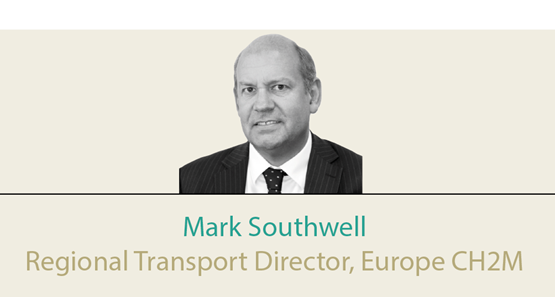
This is the fourth review in six years (McNulty, Bowe, Shaw and now Hansford) relating to the railway industry’s
delivery of capital investment. All have made significant recommendations, and the question I often ask is not ‘what?’ but ‘how?’.
Recognising that the reviews are to provide an overview with recommendations, the ‘how’ is slightly more challenging. The Hansford report states a lot of common sense, but ‘how?’ is the question. And this is where the frustration exists.
One of my observations of the industry that I have been part of for over 30 years is that it looks inwards more than outwards. Currently the water industry, led by OFWAT, is promoting alternative funding and procurement models. This is being grabbed by the water companies, referred to as Procurement 19. The basis of this has been the Tideway project, providing London with its new sewer that will manage the increased capacity and renewal of the existing systems.
This project uses private finance and is being delivered by a separate organisation to the water company. To be clear, alternative funding and delivery mechanisms still require the basics of good scope definition, strong client and resourced supply chain.
In the review there is reference to Network Rail costs. The alternative delivery mechanisms allow this to be tested and support NR in identifying efficiencies through bringing competition. It has long been recognised that competition drives innovation and efficiency, so all parties benefit… and ultimately the customer and the taxpayer.
One of the challenges is scale to make alternative funding work and be efficient. The report identifies HS2, Crossrail, and then mentions Formby lifts. There needs to be further work to see how you would deliver these types of programmes and projects - ‘one size does not fit all’.
A challenge for the current industry is the fact that Network Rail is not one organisation, and has multiple internal and external stakeholders that can affect delivery. In some cases there is no accountability, and this is probably one of the biggest areas where private finance has concerns.
The area that has been discussed at length over the years is Standards, and this is an area in itself that has ranging views. I do not propose to discuss Standards, but we do need to develop a ‘real’ performance-based contract and allow the market to deliver an output product with whole-life commitments. This will challenge the industry. It is something other industries embrace, and needs to be embraced if this is going to work.
With respect to NR, CP5 provided a process for enhancements where, with definition of scope and align off for GRIP 4, projects could be ‘signed off’ to an agreed budget. But this has not generally succeeded. I would question how you can get the scope definition with agreed programmes such as Great Western electrification - the scale creates an iterative development in relation to scope and geography.
However, projects such as Crossrail are being delivered to time and budget, so what do we need to do differently? The proposal for Network Rail to develop a commercial capability is welcomed - this role should report to the Route MD to have the necessary impact and ensure the role can give clear direction and guidance to external parties.
Finally, I hope the Hansford report does not follow the paths of many before, and is embraced by NR and supported by the Government, with opportunities given to the private sector, where there is significant enthusiasm to contribute to improving our railways.
![]()
When our industry takes so many years to give towns such as Ilkeston a railway station, it’s time we worked together and improved things.
The Hansford Review has some elements of revolutionary change, but it also points to the need to go with the grain of Network Rail’s capabilities and skills. The introduction of Business Development Managers into NR Routes signals the intent to embrace change and to provide a single point of accountability for third party projects. It’s certainly a positive step.
Hansford focuses on the larger schemes of £50 million and above. Many of us in the industry have an appetite to support the funding of rail projects, and to deliver them more quickly and efficiently. AECOM has worked on some of the Case Study schemes, and through funding, planning or design, is currently contributing to developing contestable projects. As the main article highlights, there is also a huge appetite at local level for smaller schemes such as new stations and capacity enhancement.
There is a real opportunity for organisations such as those in the Urban Transport Group to take schemes down a more contestable route and make them more deliverable and more affordable. It’s happening already (albeit in a piecemeal way) with projects such as Ilkeston and the Merseytravel schemes, and several Parkway stations in the Midlands over recent years. Promoters can certainly learn a lot by building on each of these project’s challenges and successes, instead of treating them as isolated successes. One response to Hansford must be around momentum - creating a wave of progress in contestability that builds across each project, sharing the lessons of what has worked and what must improve.
The Pathfinder Projects of all sizes are already there, and labelling them ‘Hansford Pilot’ can only serve to fast-track them more effectively and create that momentum. Hansford’s call to remove barriers to third party investment is a key part of his report - schemes need confidence in delivery and costs if they are to succeed.
If the industry is to change for the better, we have to see beyond our processes and focus on the key risks: clearly understanding the existing assets; separating upgrades from latent defects rather than building them in and increasing costs; capacity constraints; and how the asset owner (typically a Network Rail Route) expects to operate and maintain efficiently. Smart delivery understands these risks, the necessary rail processes and where they can be challenged, because the processes are there to help manage the risks. Treating processes as an end in themselves makes successful projects more difficult. Moving the rail industry into more output-based procurement will overcome this barrier, but it needs vision, leadership and real insight.
Sir Peter Hendy regularly remarks that rail provides jobs, growth, and housing. This is so clearly true - there’s nothing better than seeing the regenerative effect of major rail investment like Birmingham Gateway or Borders Rail.
But the railway vision is also about sustainable mobility. Smaller-scale investments such as new stations get people out of cars and off our roads. This in turn reduces emissions, increases safety of the travelling public, and improves healthy outcomes for all. Hansford’s review is undoubtedly a call to many players in the industry to make rail projects of all sizes more affordable, so that we can see more of these economic and environmental benefits.
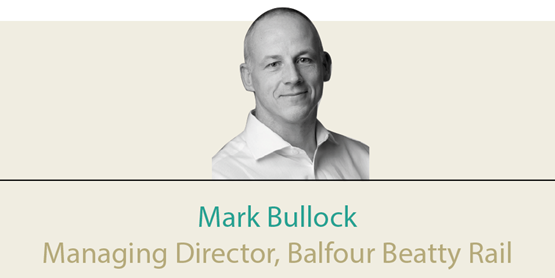
There can be no doubt that an efficient and effective rail system is hugely important to the UK. The value lies in both economic and social benefits. But the infrastructure is not getting any younger, demand is growing, and lack of
capacity is a daily problem.
All of this says we need to invest in our railways, but if only it were that simple. The scale of the task is so large that a huge amount of cash is needed. And with Network Rail now on the Government’s balance sheet, the ability to raise funds is constrained. Rail projects need to compete with other national priorities when our politicians decide where to spend taxpayers’ money. The idea of introducing private cash would therefore seem an attractive proposition.
The difficulty, of course, is how to do this in what is a complex industry structure. Hansford is insightful into the obstacles and how they might be overcome.
Ultimately it boils down to whether or not the private sector can see an appropriate balance between risk and reward that makes rail an attractive investment proposition compared with other opportunities. This in turn will hinge on the attitude of Government and Network Rail to risk transfer/retention, and the ability to establish trust and confidence in the market that encourages funders to come forward. Can a model be created that looks attractive to investors?
The structure of the industry makes it tricky to fully evaluate and allocate risks - multiple stakeholders, regulations and the separation of train and track are all blockers. For this reason it is not a one-size-fits-all solution that is required - only certain schemes will suit private investment. Often risk will be so significant (either to individual projects or to the rail network overall) that it needs to be retained by the system operator backed by Government. Pathfinder projects to prove the hypothesis (that contestability is a good thing) are critical if we are to see progress here, rather than still be talking about it five years from now.
Hansford is clear in its view of the benefits of and barriers to contestability, and is helpful in making recommendations on how to deal with these. The challenge of making change in what can seem sometimes like a world where the pace of change is glacial is fascinating. Multiple stakeholders need to be aligned. Cross-party political support will be required. The structure of the industry will again be up for debate. An enlightened approach to procurement and innovation is necessary.
New partnerships will need to be formed to bring together funders, infrastructure companies, train operators and others. The balance of responsibilities between NR Infrastructure Projects and the Routes will have to change. New procurement and franchise models will have to be found. All of these things will reshape the industry if they happen. The tenet of Hansford seems to be evolution, not revolution, but the impact of bringing in third party funding to the railway will be profound and far-reaching.
The theoretical benefits of increasing contestability are easy to see. Whether or not they are deliverable in reality remains to be established. Will this signal the start of a new dawn or be just another report on rail that gets consigned to the history books?
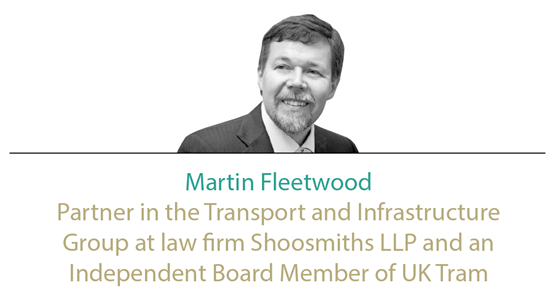
With Tom’s article referring to four other reports and reviews into Network Rail being published in the past six years, one is left hoping that there will be a period of time to allow the content of the Hansford Review and the other reports to trickle down into the heart of Network Rail and take effect. The captain can set the new course, but it still takes time to turn the tanker.
That said, there are still challenges that can be dealt with in the here and now. Confidence is needed to challenge existing thinking, particularly where industry standards are involved.
With a movement from a central command to one where there can be more joint projects between Network Rail and local transport bodies, a new evaluation of the perceived risk is also required. Looking at the skills of the other parties that can be involved should be encouraged, for the benefit of the industry as a whole. Arguably questioning why something is the way it is, such as a standard, is simply a process of managing that ’thing’.
Most scientific breakthroughs have come about through challenging the relevant status quo. There is a significant amount of rail experience which sits outside of Network Rail, and all too often this is ignored. In some cases, third party contractors may have greater experience of specific matters than Network Rail, due to their international work. Ensuring the right partners for a project is part of a good procurement strategy.
Building confidence on what is to be delivered and ensuring that there are no nasty surprises on cost escalation are fairly fundamental tenets for involving third parties in construction projects. Too often we have seen escalating costs lead to a major player exiting the relevant industry, or discouraging others from getting involved.
This is, of course, not just confined to heavy rail - the increased costs of building Phase 1 of the Nottingham tram system caused Carillion to leave the light rail sector, and the well-publicised issues over the construction of Edinburgh’s tram system had a number of organisations saying ‘never again’. However, these issues were generally due to physical issues which had not been fully known at the time the contract was let, rather than cost increases occurring during the design stage and inflexible standards. More projects in the light rail sector are built to time and on budget (or even opened early), but these do not grab the headlines.
Within the light rail industry, while it is acknowledged that there needs to be relevant safety and construction standards, the industry as a whole agrees that these need to be proportionate and appropriate. The design for a city centre tram stop has to meet a set of safety criteria which form part of the specification, but then it is up to the relevant contractor to design and construct the tram stop itself, influenced by its (often considerable) construction experience. The local transport authority is not constantly checking and re-checking what is to be delivered, despite the potential footfall of hundreds of thousands of passengers using that stop, and is prepared to rely on the experience of the contractor (backed by appropriate indemnities).
While it is custodian of the infrastructure, Network Rail does need to be more flexible. Some of the learning which has come out of the Sheffield tram-train project will hopefully influence how NR looks to its standards, particularly where there may be other standards from a complementary industry that could be considered.
While standards have a role to play, consideration is needed of what they are intended to do and if an alternative method can be followed to mitigate or reduce the risk that the standard has been produced to protect against. With its link to the main line, arguably a Class 66 locomotive could try and run onto the Sheffield Supertram system. However, the tram system is not being re-engineered in case such a locomotive does make it onto their metals.
The high levels of public funding into tram systems has made the sector highly conscious of its costs. As a result, the light rail industry has been keen to explore different methods of involving third parties, whether through a PFI-type contractual involvement, infrastructure-only turn-key contracts, or with operator-led developments. Contractors, funders and investors have contributed through proposing structures which are fundable and which have sensible allocations of controllable risk. In some circumstances, these options have been the keys which unlock a project that was otherwise unfundable in its original form. But importantly, the parties have been flexible in their approach, considering the output that they wish to achieve.
As a result of the Hansford Review, it would be good to see Network Rail engaging with sectors such as the light rail industry, particularly given the sector’s activities outside of London and interaction with local transport bodies - especially at Combined Authority level. Adopting some of the techniques used, notably in managing design and construction time, could provide considerable advantages - not just in the projects themselves, but also in obtaining third party involvement, particularly where local authority or other funders are needed.

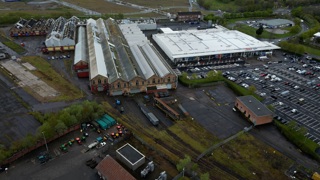
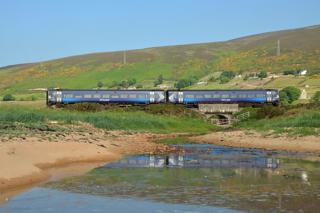
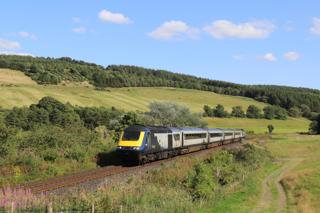
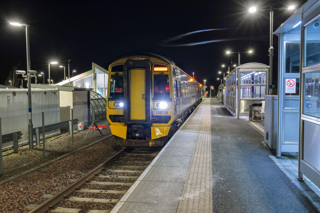
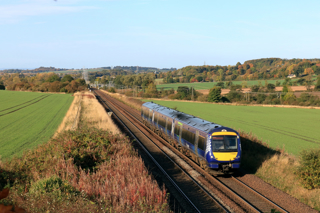




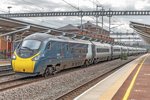







Login to comment
Comments
No comments have been made yet.